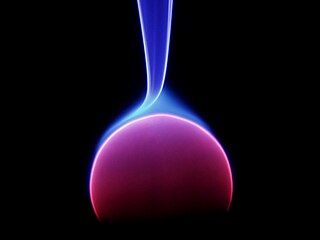This is an index of energy articles.
This is an index of energy articles.
Activation energy - Alternative energy - Anisotropy energy - Atomic energy
Binding energy - Bioenergy - Black hole - Breeder reactor - Brown energy
Characteristic energy - Chemical energy - Conservation of energy - Consol Energy
Dark energy - Decay energy - Direct Energy - Dirichlet's energy - Dyson's sphere
Ecological energetics - Electric potential energy - Electrochemical energy conversion - Embodied energy - Encircled energy - Energy - Energy accidents - Energy accounting - Energy amplifier - Energy applications of nanotechnology - Energy balance (biology) - Energy barrier - Energy being - Energy carrier - Energy Catalyzer - Energy cell - Energy charge - Energy conservation - Energy conversion efficiency - Energy crop - Energy current - Energy density - Energy development - Energy-dispersive X-ray spectroscopy - Energy distance - Energy drift - Energy efficiency gap - Energy-efficient landscaping - Energy elasticity - Energy engineering - Energy (esotericism) - Energy expenditure - Energy factor - Energy field disturbance - Energy filtered transmission electron microscopy - Energy transfer - Energy flow (ecology) - Energy flux - Energy forestry - Energy functional - Energy harvesting - Energy independence - Energy input labeling - Energy landscape - Energy level - Energy level splitting - Energy management software - Energy management system - Energy–maneuverability theory - Energy medicine - Energy–momentum relation - Energy monitoring and targeting - Energy Probe - Energy profile (chemistry) - Energy quality - Energy recovery ventilation - Energy security - Energy (signal processing) - Energy Slave - Energy Star - Energy statistics - Energy storage - Energy system - Energy technology - Energy tower (downdraft) - Energy transfer - Energy transfer upconversion - Energy transformation - Energy value of coal - Enthalpy - Entropy - Equipartition theorem - E-statistic - Exertion
Geothermal energy - Gravitational energy - Gravitational potential
Interaction energy - Intermittent energy source - Internal energy - Invariant mass - Ionization energy
Magnetic confinement fusion - Marine energy - Mass–energy equivalence - Mechanical energy - Möbius energy - Muzzle energy
Negative energy - Nuclear fusion - Nuclear power - Nuclear reactor
Photosynthesis - Potential energy - Power (physics) - Primary energy
Seismic scale - Solar energy - Solar thermal energy - Sound energy - Specific energy - Specific kinetic energy - Specific orbital energy - Surface energy
Thermal energy - Thermodynamic free energy - Threshold energy - Tidal power - Turbulence kinetic energy
Watt meter - Work (physics) - World energy resources and consumption
Zero-energy building - Zero-energy universe - Zero-point energy

Energy is the quantitative property that is transferred to a body or to a physical system, recognizable in the performance of work and in the form of heat and light. Energy is a conserved quantity—the law of conservation of energy states that energy can be converted in form, but not created or destroyed; matter and energy may also be converted to one another. The unit of measurement for energy in the International System of Units (SI) is the joule (J).

Nuclear fusion is a reaction in which two or more atomic nuclei, usually deuterium and tritium, combine to form one or more different atomic nuclei and subatomic particles. The difference in mass between the reactants and products is manifested as either the release or absorption of energy. This difference in mass arises due to the difference in nuclear binding energy between the atomic nuclei before and after the reaction. Nuclear fusion is the process that powers active or main-sequence stars and other high-magnitude stars, where large amounts of energy are released.

A nuclear thermal rocket (NTR) is a type of thermal rocket where the heat from a nuclear reaction replaces the chemical energy of the propellants in a chemical rocket. In an NTR, a working fluid, usually liquid hydrogen, is heated to a high temperature in a nuclear reactor and then expands through a rocket nozzle to create thrust. The external nuclear heat source theoretically allows a higher effective exhaust velocity and is expected to double or triple payload capacity compared to chemical propellants that store energy internally.
A nuclear electric rocket is a type of spacecraft propulsion system where thermal energy from a nuclear reactor is converted to electrical energy, which is used to drive an ion thruster or other electrical spacecraft propulsion technology. The nuclear electric rocket terminology is slightly inconsistent, as technically the "rocket" part of the propulsion system is non-nuclear and could also be driven by solar panels. This is in contrast with a nuclear thermal rocket, which directly uses reactor heat to add energy to a working fluid, which is then expelled out of a rocket nozzle.
In a traditional nuclear photonic rocket, an onboard nuclear reactor would generate such high temperatures that the blackbody radiation from the reactor would provide significant thrust. The disadvantage is that it takes much power to generate a small amount of thrust this way, so acceleration is very low. The photon radiators would most likely be constructed using graphite or tungsten. Photonic rockets are technologically feasible, but rather impractical with current technology based on an onboard nuclear power source.

Thermodynamic temperature is a quantity defined in thermodynamics as distinct from kinetic theory or statistical mechanics.
In physics and chemistry, binding energy is the smallest amount of energy required to remove a particle from a system of particles or to disassemble a system of particles into individual parts. In the former meaning the term is predominantly used in condensed matter physics, atomic physics, and chemistry, whereas in nuclear physics the term separation energy is used. A bound system is typically at a lower energy level than its unbound constituents. According to relativity theory, a ΔE decrease in the total energy of a system is accompanied by a decrease Δm in the total mass, where Δmc2 = ΔE.

In nuclear engineering, a neutron moderator is a medium that reduces the speed of fast neutrons, ideally without capturing any, leaving them as thermal neutrons with only minimal (thermal) kinetic energy. These thermal neutrons are immensely more susceptible than fast neutrons to propagate a nuclear chain reaction of uranium-235 or other fissile isotope by colliding with their atomic nucleus.
Muon-catalyzed fusion is a process allowing nuclear fusion to take place at temperatures significantly lower than the temperatures required for thermonuclear fusion, even at room temperature or lower. It is one of the few known ways of catalyzing nuclear fusion reactions.

In physics, mass–energy equivalence is the relationship between mass and energy in a system's rest frame, where the two quantities differ only by a multiplicative constant and the units of measurement. The principle is described by the physicist Albert Einstein's formula: . In a reference frame where the system is moving, its relativistic energy and relativistic mass obey the same formula.

Energy development is the field of activities focused on obtaining sources of energy from natural resources. These activities include the production of renewable, nuclear, and fossil fuel derived sources of energy, and for the recovery and reuse of energy that would otherwise be wasted. Energy conservation and efficiency measures reduce the demand for energy development, and can have benefits to society with improvements to environmental issues.
The fission-fragment rocket is a rocket engine design that directly harnesses hot nuclear fission products for thrust, as opposed to using a separate fluid as working mass. The design can, in theory, produce very high specific impulse while still being well within the abilities of current technologies.

In physical sciences, mechanical energy is the sum of potential energy and kinetic energy. The principle of conservation of mechanical energy states that if an isolated system is subject only to conservative forces, then the mechanical energy is constant. If an object moves in the opposite direction of a conservative net force, the potential energy will increase; and if the speed of the object changes, the kinetic energy of the object also changes. In all real systems, however, nonconservative forces, such as frictional forces, will be present, but if they are of negligible magnitude, the mechanical energy changes little and its conservation is a useful approximation. In elastic collisions, the kinetic energy is conserved, but in inelastic collisions some mechanical energy may be converted into thermal energy. The equivalence between lost mechanical energy and an increase in temperature was discovered by James Prescott Joule.

Energy transformation, also known as energy conversion, is the process of changing energy from one form to another. In physics, energy is a quantity that provides the capacity to perform work or moving or provides heat. In addition to being converted, according to the law of conservation of energy, energy is transferable to a different location or object, but it cannot be created or destroyed.
In physics, energy density is the quotient between the amount of energy stored in a given system or contained in a given region of space and the volume of the system or region considered. Often only the useful or extractable energy is measured. It is sometimes confused with stored energy per unit mass, which is called specific energy or gravimetric energy density.

Aneutronic fusion is any form of fusion power in which very little of the energy released is carried by neutrons. While the lowest-threshold nuclear fusion reactions release up to 80% of their energy in the form of neutrons, aneutronic reactions release energy in the form of charged particles, typically protons or alpha particles. Successful aneutronic fusion would greatly reduce problems associated with neutron radiation such as damaging ionizing radiation, neutron activation, reactor maintenance, and requirements for biological shielding, remote handling and safety.
The following outline is provided as an overview of and topical guide to energy:
The polywell is a proposed design for a fusion reactor using an electric and magnetic field to heat ions to fusion conditions.
Direct energy conversion (DEC) or simply direct conversion converts a charged particle's kinetic energy into a voltage. It is a scheme for power extraction from nuclear fusion.